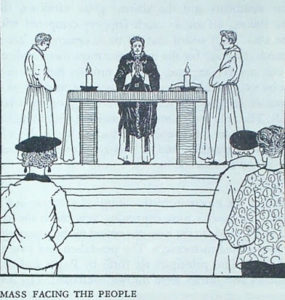The “primordial form” of Sunday was not so much a feast looking back to the resurrection of Christ on the first Easter, or to any particular mystery or moment of His earthly life, but rather a looking forward with longing to the Lord’s return in glory, imploring Him to deliver us from the evils of sin, death, and hell. Sunday Mass was about the life of the world to come, which the early Christians, suffering bitter and horrific trials, must have thought about a great deal as they hoped and prayed that they would remain faithful: “lead us not into temptation but deliver us from evil.” For this reason, the eastward focus of prayer was a poignant symbol: after the dark and cold night, the sun will rise gloriously on the eastern horizon, shedding light and warmth.
In turning the priest towards the people, we decisively severed ourselves from that which was most ancient, most intrinsic, and most distinctive in our worship as Christians. When we return to ad orientem, we return decisively to the fundamentals of Christian faith and its original practice.
Full article by Peter Kwasniewski here.
Also read Peter Kwasniewski’s answer to a priest’s reaction to this article: Does facing east at Mass rely on a picture of God as someone ‘out there and up there’? (Traducción en Español: ¿Se basa la Misa ad orientem en un concepto de Dios cómo Alguien que está allá arriba a lo lejos?)

